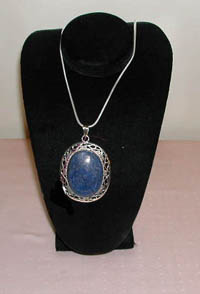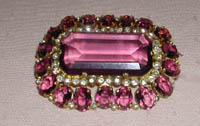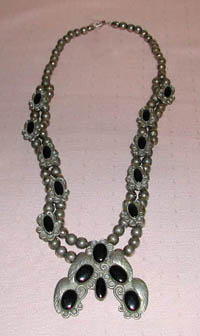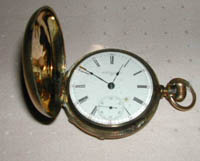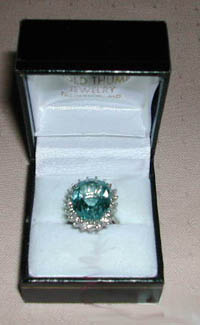Jewelry Blog
DO YOU LOVE YOUR JEWELRY??
You care about your jewelry so much that you insured it with a special schedule on your insurance policy. You now feel secure that in the case of loss or theft that you are assured to receive the value you are paying the premium on...WRONG!!
Update: After a year of fighting the insurance company I finally received payment in full. An insurance company will only pay on a description that is on file as the insured item. My insurance company was supplied 2 appraisals by the same gemologist two years apart, each with the same value. My adjuster was very crafty in choosing the one appraisal that the clarity on the diamond was not specific. Because of this he was able to have his jeweler quote a settlement on an inferior stone. It took a long time for me to figure this out.When you took out your insurance policy did your agent explain to you the term “stated value”? Probably not. “Stated value” is the most common value used in the insurance industry. Simply put it means that although you pay the premium on say $5,000 for a piece of jewelry, the insurance company is only obligated to pay you on a “cash out” bases, the value for what they can purchase the piece for. “Stated amount” is the term used in the industry which means that if your $5000 piece of jewelry is lost or stolen, you will be paid the $5000 in total. This coverage is costlier than stated value, but you are assured to be paid the value with no hassles. Not all insurance carriers are willing to cover jewelry in this manner. So now you think, “my appraisal says Replacement Value”. This is not actually true. The value on a jewelry appraisal is a replacement value for the future. In time your piece of jewelry will appreciate in value to this figure. The value in your appraisal should actually be called insured value. A replacement value is the current retail value. In my case since the appraisal was so old, my ring had time to appreciate up to current retail value which was more than my insured value. So, why didn’t the insurance company go ahead and pay me the insured value? BECAUSE: Jewelry replacement is a big business for insurance companies. Insurance companies give jewelers a lot of business. At some point it became common practice for jewelers to give insurance companies HUGE discounts on replacement jewelry. This leads me back to the term stated value. As I told you above, the insurance company is only obligated to pay you the value on what they can replace the piece of jewelry for. Essentially, this discount not only means that the extra premium you pay on your insured value is meaningless, it also means that you are being steered or forced into purchasing jewelry from a store you never intended to shop at.
MY ADVICE TO YOU
- Make sure you have a very detailed description of your jewelry on the appraisal – not only carat weight, color and clarity, but the grade of cut, proportion of the stone or size of the table, polish, symmetry, and florescence. Make sure the setting is described in detail also, preferably with the pennyweight of the gold or other precious metal. If you have this you can make sure your insurance company is comparing “apples to apples” in the replacement value of your item.
- If you are updating your appraisal read it carefully to make sure there are no errors in the description based on your previous appraisal.
- You may want to consider having the appraised value reflect the retail value vs. the future value. You will save money on your insurance premium.
- You may want to consider insuring your most precious items with an insurance carrier that specializes in jewelry vs. your homeowner’s policy. You will still have a certain limit on your homeowner’s policy for your other items which may have a limit of $1000 or $2500. The terms with special jewelry policies most likely will let you use your jeweler of choice in the replacement process.
- If you have to make a claim, be diligent!! Ask for the details on your replacement piece. Get second opinions from other jewelers. In my case I believe that the value they wanted to pay was based on both the jewelers discount and an inferior stone. If your insurance company won’t budge in negotiating the value on your settlement, you have a right to make a formal complaint to the property and casualty division of your state’s Insurance Administration.

